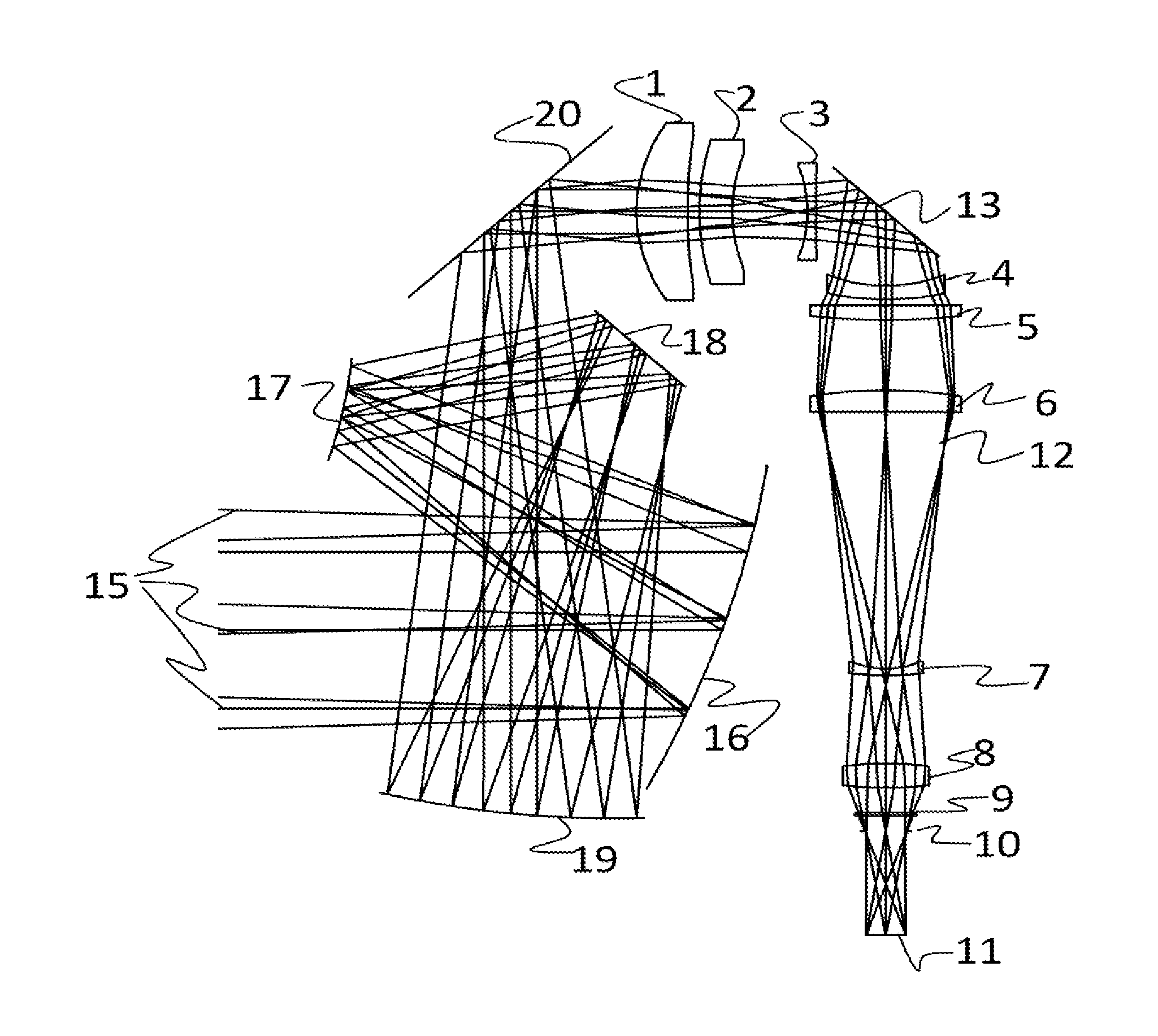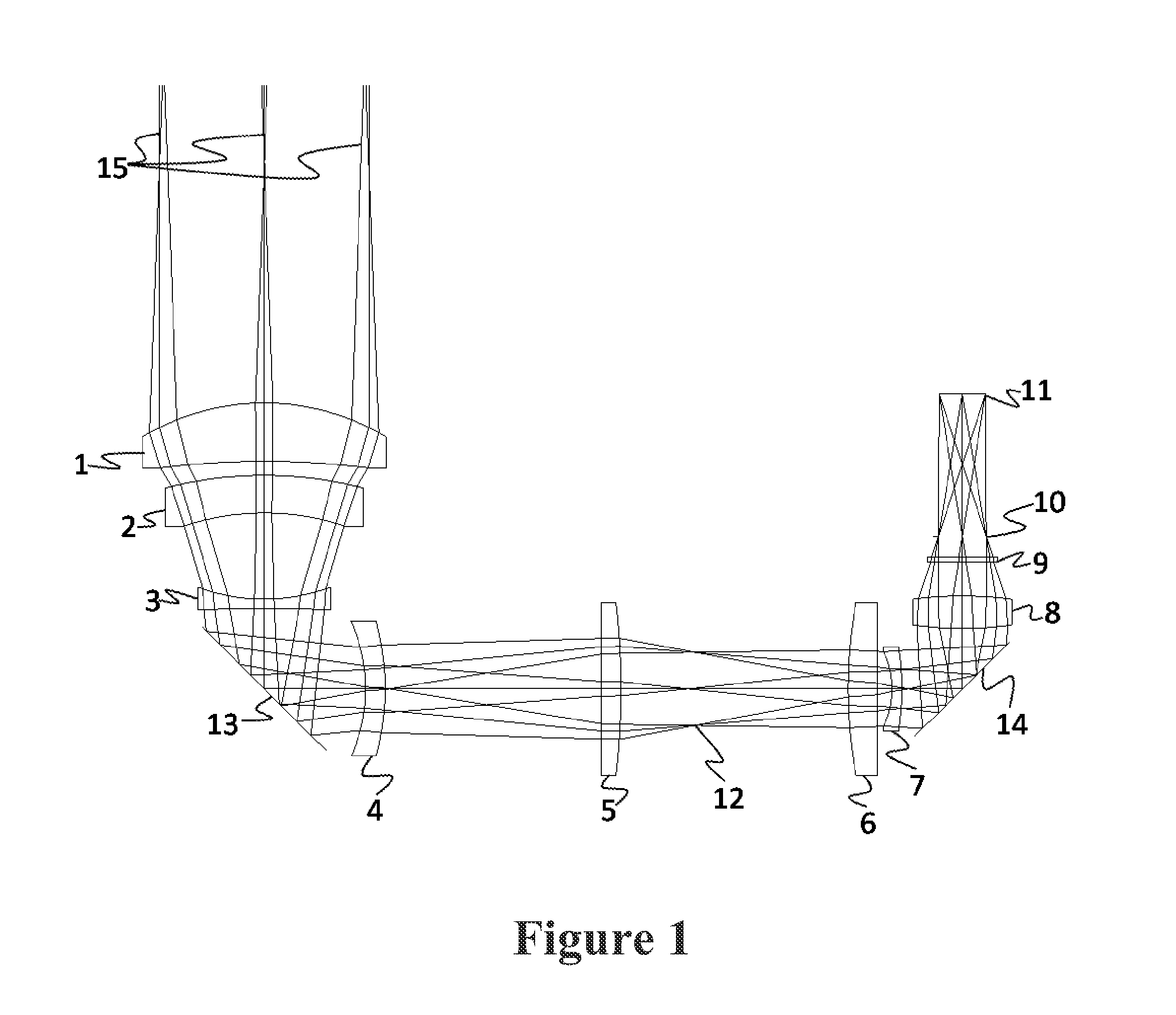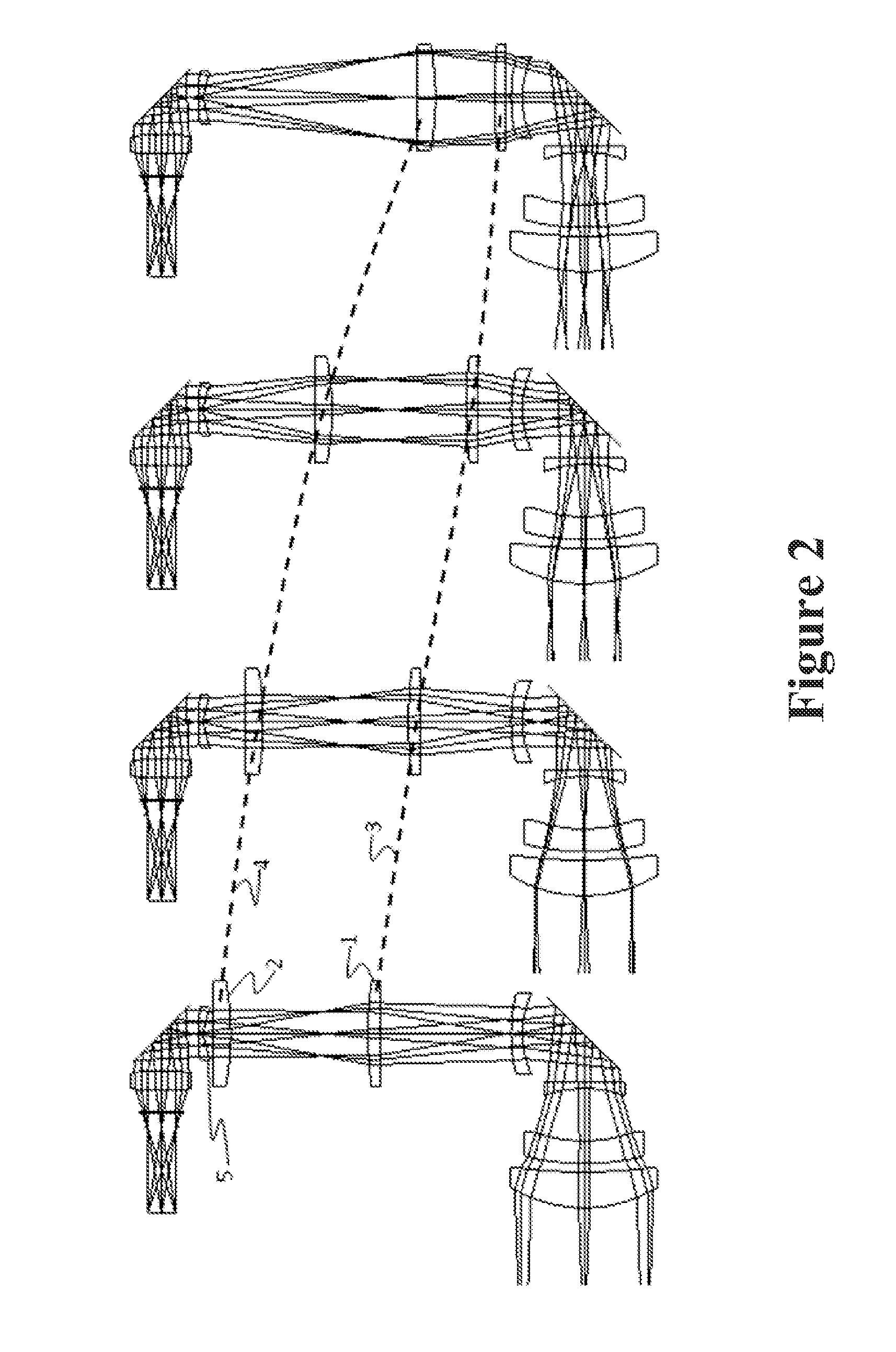Dual band infrared continuous zoom lens
a continuous zoom and infrared technology, applied in the field of optics, can solve the problems of complex optical design of the dual band system, difficult for systems that require significant focal length changes, etc., and achieve the effect of compact optical operating system
- Summary
- Abstract
- Description
- Claims
- Application Information
AI Technical Summary
Benefits of technology
Problems solved by technology
Method used
Image
Examples
Embodiment Construction
[0024]An exemplary optical system as shown in FIG. 1 comprises eight infrared imaging lenses that all transmit over the wavelengths 3.5-11.0 microns and form a collocated image plane for the MWIR (3.5-5.0 microns) and LWIR (7.5-11.0 microns) spectral bands. The lens arrangement can have six stationary lenses, and two lenses that move in an axial fashion. The lens arrangement is configured as an imager to utilize a cold stop inside the dewar to act as the aperture stop of the system and control the stray light from reaching the FPA, as is typically configured in a cooled infrared system. The pupil is reimaged from the cold stop to near the first lens of the system to minimize the size of the lens. The optic is designed to operate at an f / number of 3.0 and provides a focal length range from 38 mm to 130 mm for a 640×480 element focal plane array with micron square pixels. This has an equivalent image plane diameter of 16 mm, and results in a horizontal field of view range of 5.6-19.1 ...
PUM
 Login to View More
Login to View More Abstract
Description
Claims
Application Information
 Login to View More
Login to View More - R&D
- Intellectual Property
- Life Sciences
- Materials
- Tech Scout
- Unparalleled Data Quality
- Higher Quality Content
- 60% Fewer Hallucinations
Browse by: Latest US Patents, China's latest patents, Technical Efficacy Thesaurus, Application Domain, Technology Topic, Popular Technical Reports.
© 2025 PatSnap. All rights reserved.Legal|Privacy policy|Modern Slavery Act Transparency Statement|Sitemap|About US| Contact US: help@patsnap.com



